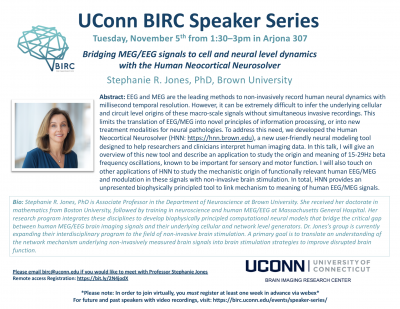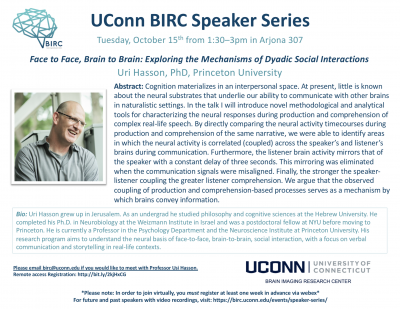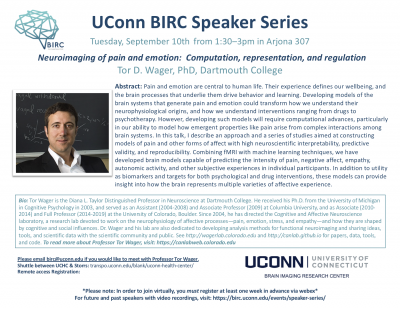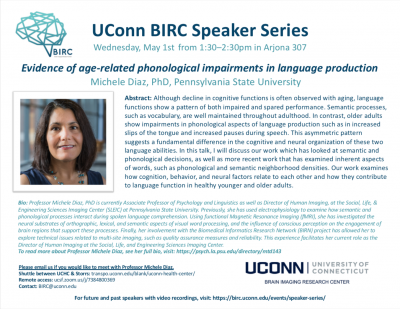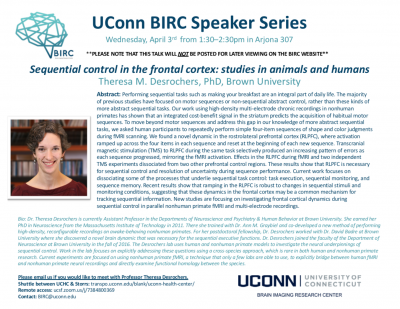Brown University
Tuesday, November 5th from 1:30-3:00 pm in Arjona 307
Abstract: EEG and MEG are the leading methods to non-invasively record human neural dynamics with millisecond temporal resolution. However, it can be extremely difficult to infer the underlying cellular and circuit level origins of these macro-scale signals without simultaneous invasive recordings. This limits the translation of EEG/MEG into novel principles of information processing, or into new treatment modalities for neural pathologies. To address this need, we developed the Human Neocortical Neurosolver (HNN: https://hnn.brown.edu), a new user-friendly neural modeling tool designed to help researchers and clinicians interpret human imaging data. In this talk, I will give an overview of this new tool and describe an application to study the origin and meaning of 15-29Hz beta frequency oscillations, known to be important for sensory and motor function. I will also touch on other applications of HNN to study the mechanistic origin of functionally relevant human EEG/MEG and modulation in these signals with non-invasive brain stimulation. In total, HNN provides an unpresented biophysically principled tool to link mechanism to meaning of human EEG/MEG signals.
Bio: Stephanie R. Jones, PhD is Associate Professor in the Department of Neuroscience at Brown University. She received her doctorate in mathematics from Boston University, followed by training in neuroscience and human MEG/EEG at Massachusetts General Hospital. Her research program integrates these disciplines to develop biophysically principled computational neural models that bridge the critical gap between human MEG/EEG brain imaging signals and their underlying cellular and network level generators. Dr. Jones’s group is currently expanding their interdisciplinary program to the field of non-invasive brain stimulation. A primary goal is to translate an understanding of the network mechanism underlying non-invasively measured brain signals into brain stimulation strategies to improve disrupted brain function.
**To view this talk remotely via Webex, please register hereby October 29th**
Please email birc@uconn.edu if you are interested in meeting with a speaker. Click here to see the full BIRC Speaker Series schedule and access recordings of past talks.
